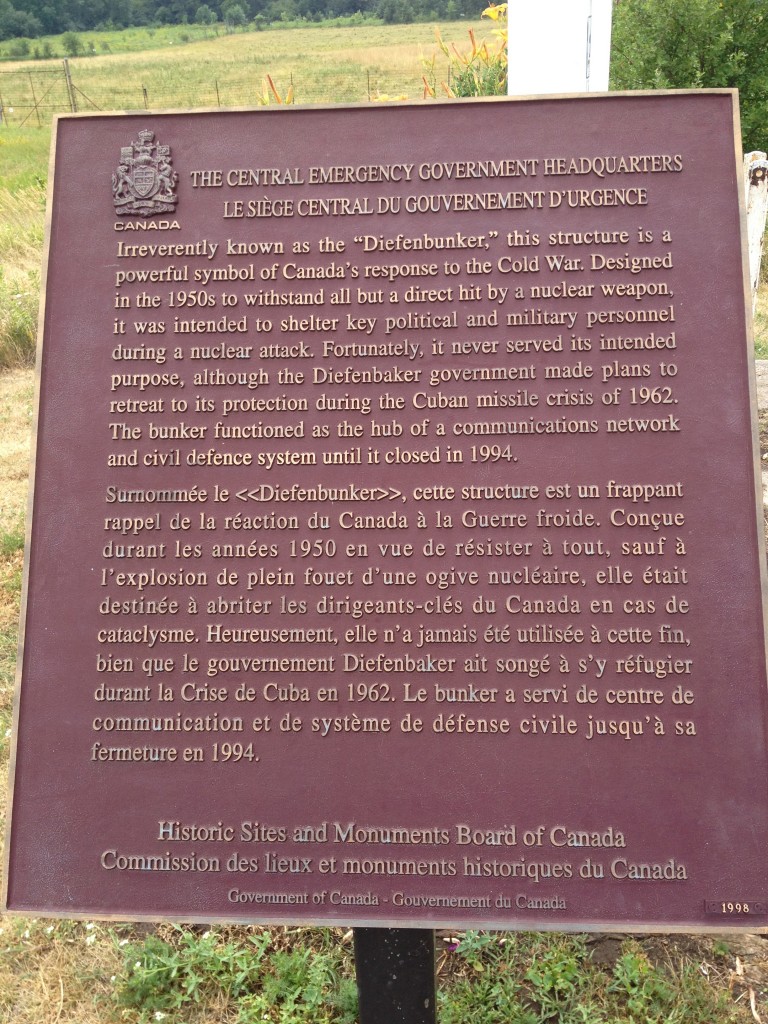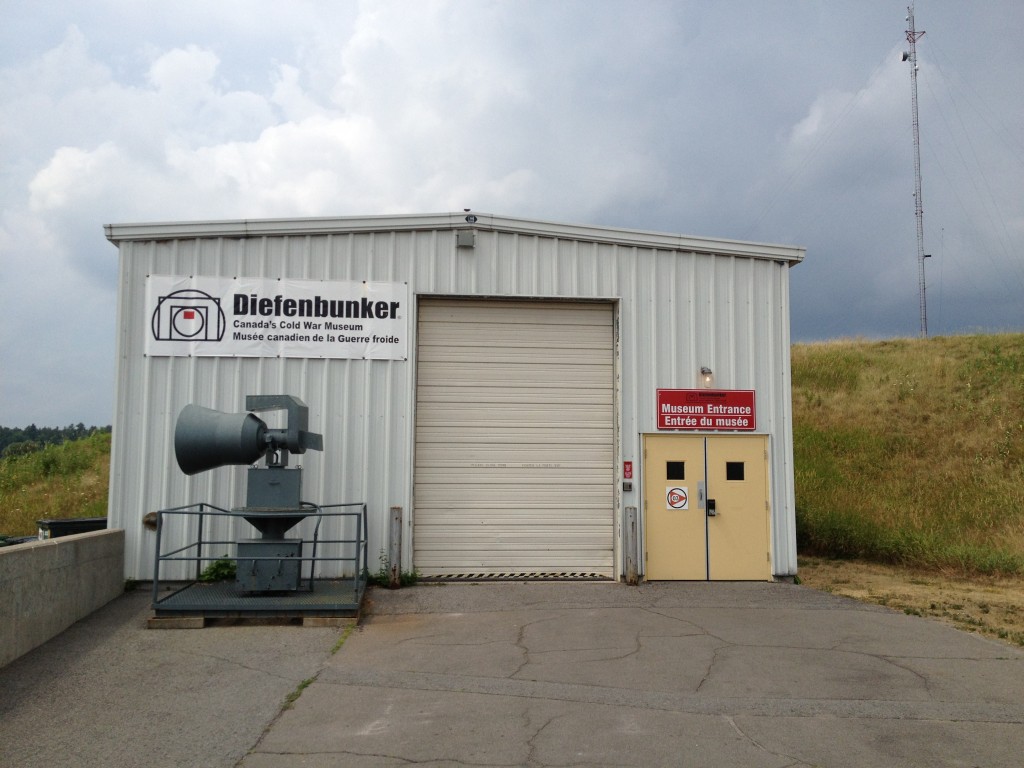As regular readers will know, I’ve been to Moscow many times going back all the way to 1988 when it was still the capital of the USSR. When I went back for the first time post-Soviet Union about 10 years ago, it was hard to believe it was the same country…but in some ways it still was. The familiar sites were still there: Red Square, the Kremlin, St. Basil’s, GUM, etc, but all the western stores and hotels made it feel the same…just more globalized.
In the years since then, I’ve traveled all around Moscow, seeing all the major sites many times. This trip, we really wanted to take the advantage of having a long period and explore some of the more out of the way and less usual site, starting with the Central Air Force Museum way out in Monino.
Now, saying “way out” is a bit relative, given the museum is only 40km east of Moscow, but it’s nowhere near a metro or train station, so this means either multiple bus and tram connections or taking a taxi. I checked Yandex and it was only about 1200 rubles (less than $20) so we opted for convenience. Unfortunately, the traffic was brutal that morning and it took us nearly two hours to get to the museum!
The Central Air Force Museum in Monino is absolutely huge, with over 170 aircraft on display, some indoors in two large hangers, and many outdoors. There are also over 100 engines and other aircraft related memorabilia on display. It was an absolute airplane geek’s paradise.
Few words if you’re considering it: the staff speak absolutely no english at all (though I’m guessing if you speak no Russian they can do the basics like toilet, go here, etc) but that said, they were some of the nicest, friendliest, and most helpful people I’ve ever encountered at a tourist venue in Russia. More on that as I go along.
After purchasing our tickets, the first stop was the hanger with older WWI and WWII aircraft. Upon entering, the ticket taker very helpfully explained the layout of the museum to us, and gave us all the details about the layout of the museum. She clearly loved her job, and slowed down her speech speaking very clearly so we could understand every word. I was impressed – it’s not common that non-English speakers in Russia make an attempt to make it easier on tourists, and she gave a super positive first impression!
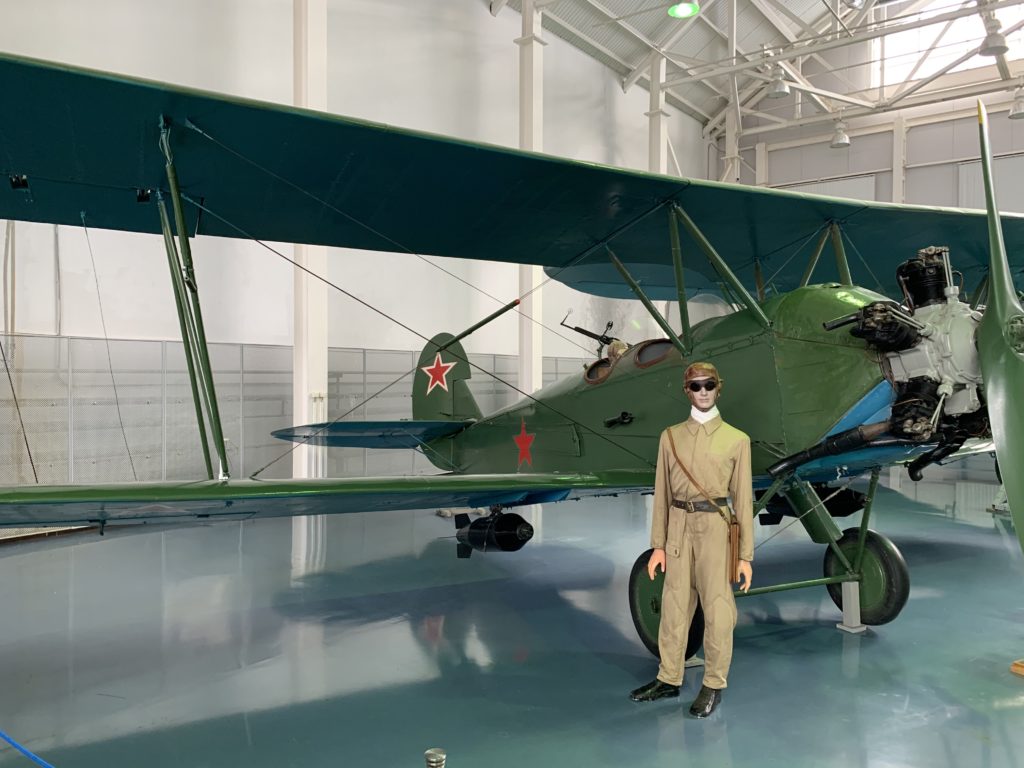
An Ilyushin 10M from World War II – 1944. The displays (mostly in Russian only, although some had English as well) not only had details on the plane, but on the types of missions they flew, and often about Hero Pilots who had flown them. Really cool!

After spending about 45 minutes wandering the two large indoor hangers, it was outside and maybe a 200 meter walk until we got to the outdoor part of the museum. Sure, it was a little cold, maybe about -15C and super windy, but how bad could/would it be. Wrong thing to question…
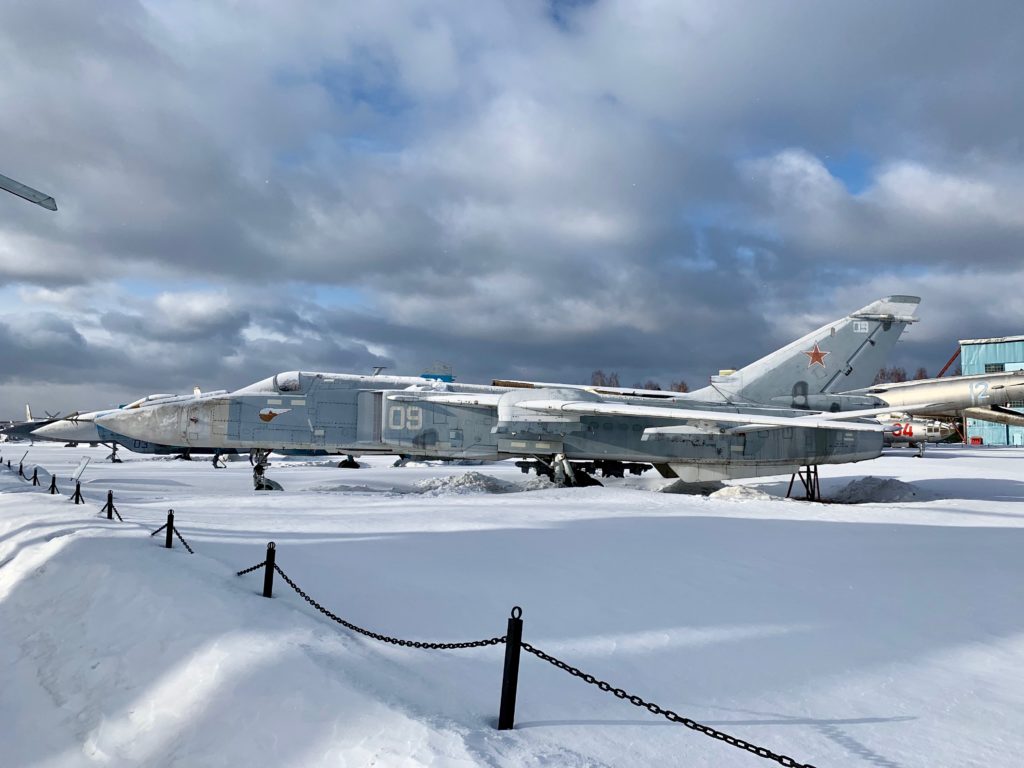
After walking the first part of the outdoor section, there was another non-climate controlled hanger with some larger pieces. Like this “Volga Stratospheric Balloon Car.”

Back outside, and an Aeroflot Mi-2 Helicopter:

Myasischev M-17 Stratophera – aka what happens when you forget to de-ice the plane before takeoff…mainly took this photo because I loved the look of the plane with huge sheets of ice hanging off the wings.

Posing in front of a Tupolev Tu-144 aka Concordeski…it was cool to see this given I had just seen another one in Germany the month before. 17 were built in total, two suffered fatal crashes, and only five every saw passenger service. At this point I was absolutely freezing, and it was “take hands out of pockets for two seconds, snap quick pick, and move on.”

Mi-12 Heavy Transport Helicopter…one of the most unique looking aircraft on display :

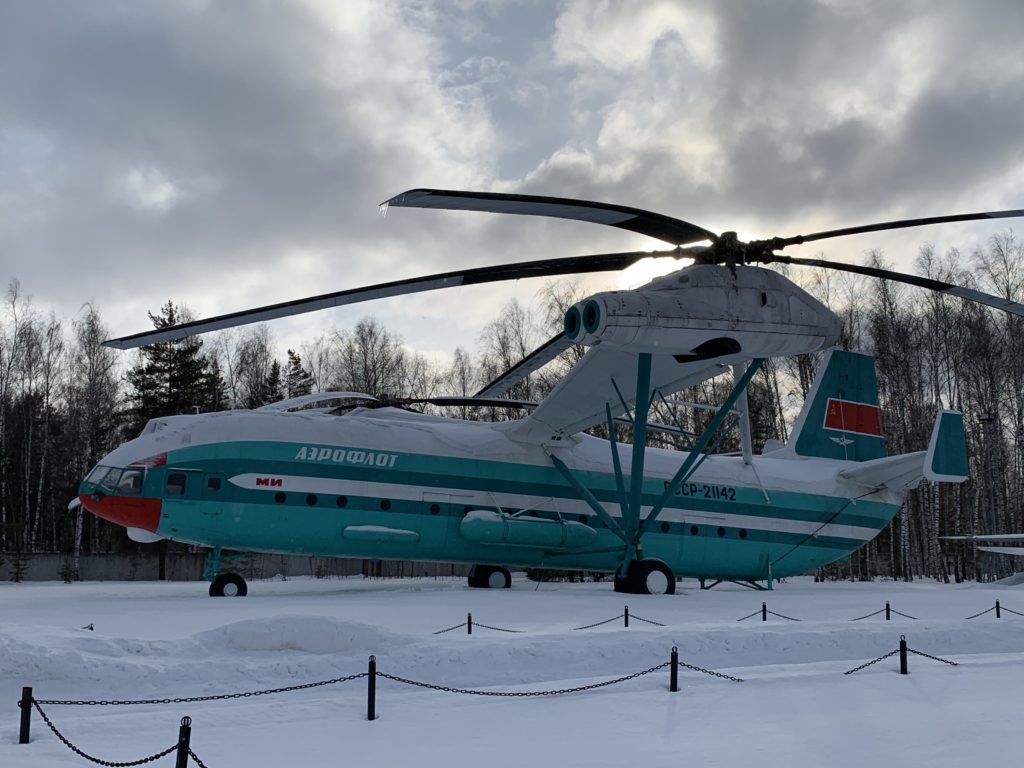
After walking around outside and freezing (dozens of more photos I didn’t share here) it was time to head inside and check what I expected would be a very dangerous giftshop. But first, I had to take a flight…
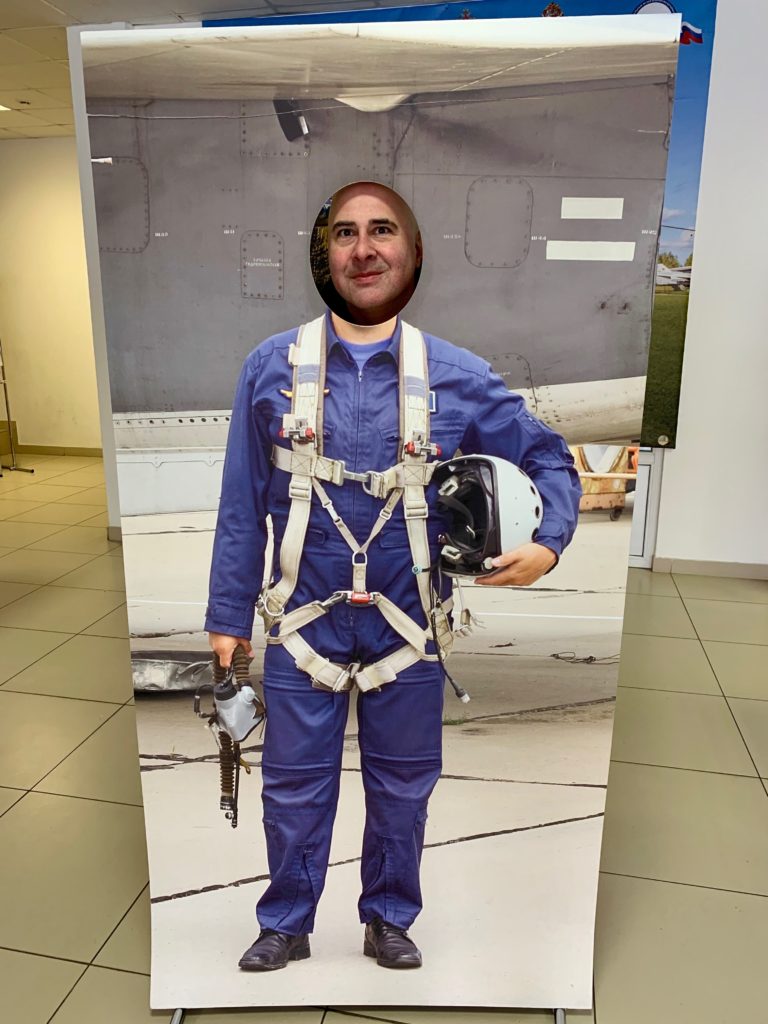
Fortunately, the gift shop wasn’t too dangerous, although the proprietor was quite a character. She was extremely chatty, impressed by Americans who spoke Russian, and wanted to make sure she showed us every possible thing in the gift shop, as well as telling us all about upcoming special events at the museum. She even encouraged us to come back in the summer when we might enjoy it even more!
Overall, a super cool experience, and if you’re an aviation geek at all I recommend it very highly!
That night, out for more delicious Georgian food. Starting with a jug of house wine…which apparently is poured into a bowl for drinking! Chug, chug, chug!
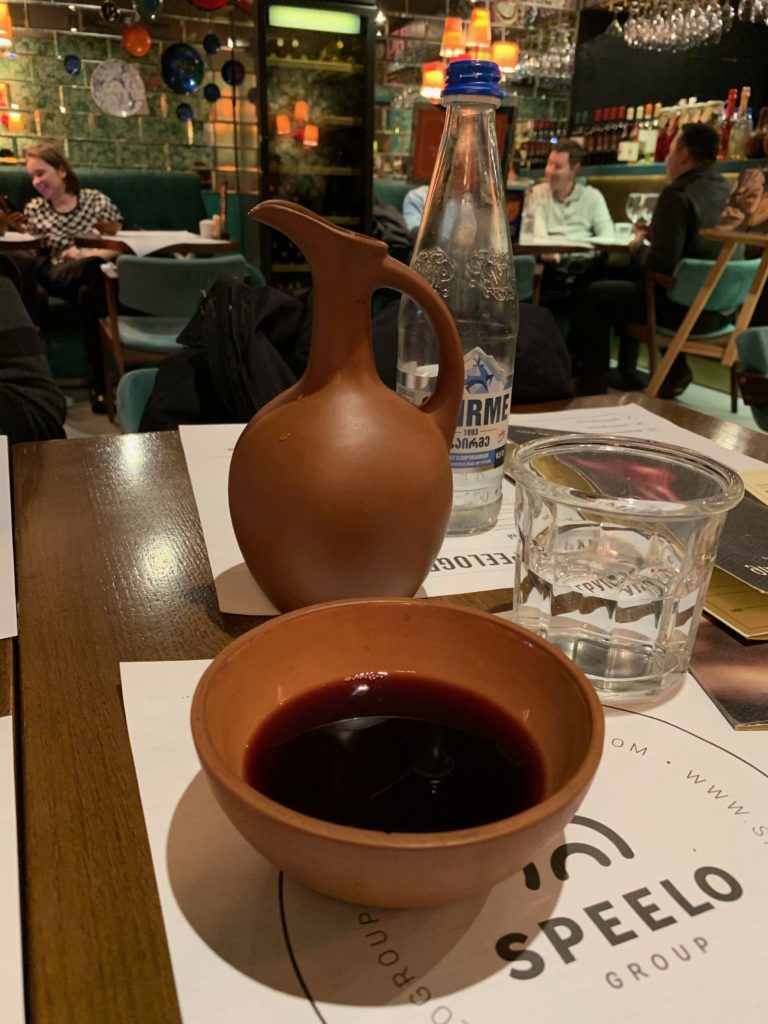
Khatchapuri again, this one being way more delicious than the previous restaurant.

We decided to branch out for after-dinner drinks, and found another pretty cool pub. Craft Republic was kind of in the basement of a building, but they had a Pac-Man machine, awesome beer list, and even some Cypress Hill blasting from the speakers!
The next day, it was off to Bunker 42 to see where the Soviet Missile Command would retreat to if Moscow was under nuclear attack in the Cold War days. I’ve been to Canada’s version, the Diefenbunker, but figured the Soviet one being right in the middle of Moscow would be super cool. But first, you walk down 16 flights of stairs to get to the depth which engineers calculated could withstand a direct hit from the earliest nuclear weapons:
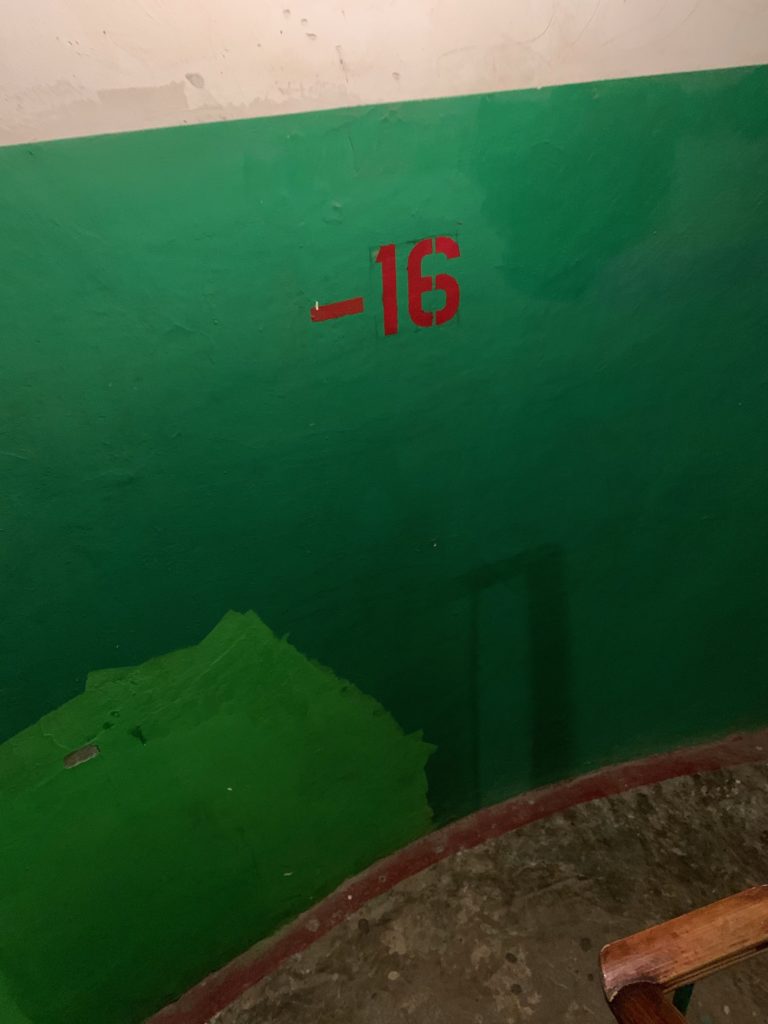
At the bottom, through a metal-clad corridor into the bunker itself:
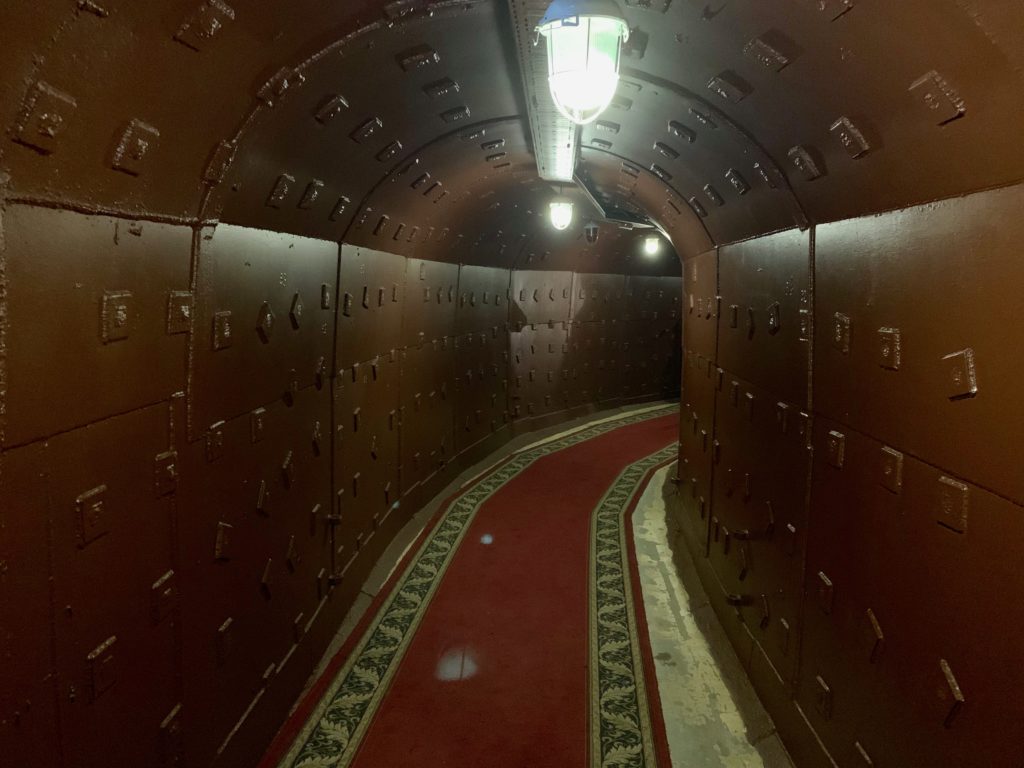
Guard-post at the entrance to the bunker complex:
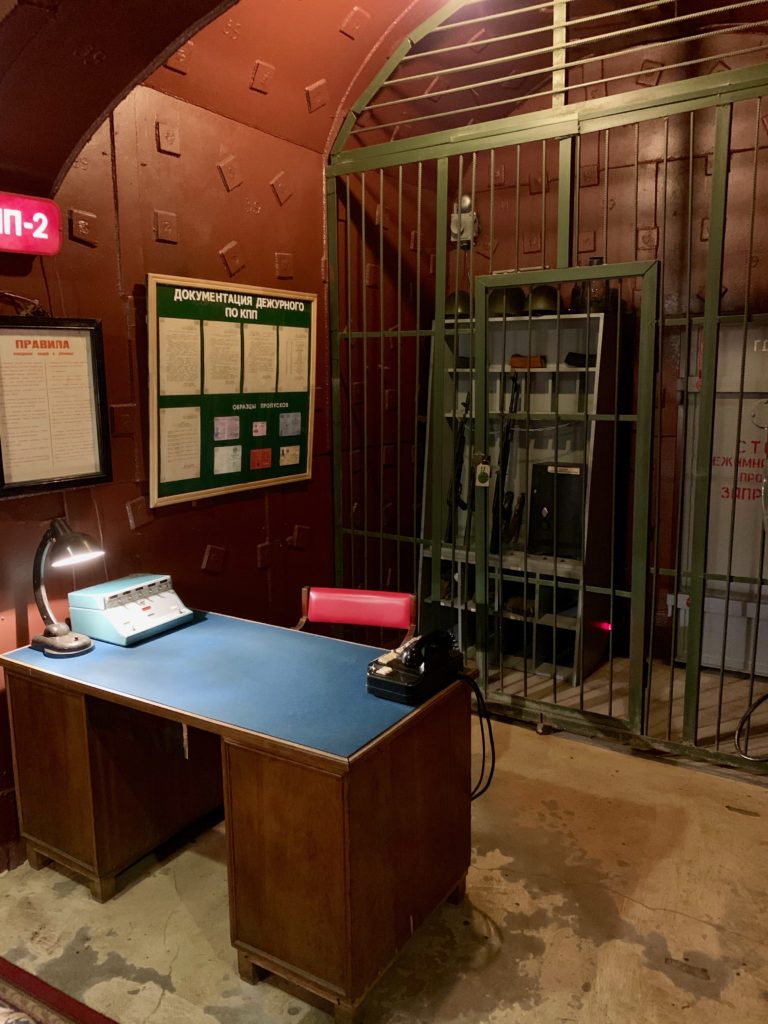
The Anteroom to Stalin’s personal chambers in the bunker. I was cracking up at all the mannequins:
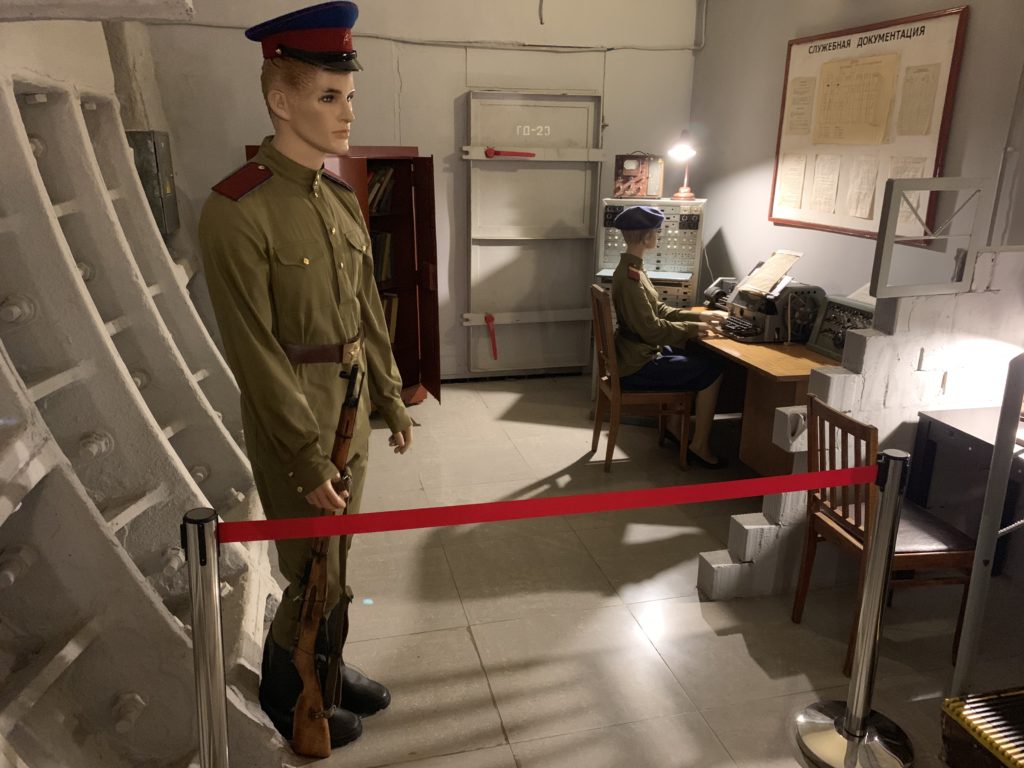
Da. Comrade Stalin is right upstairs:
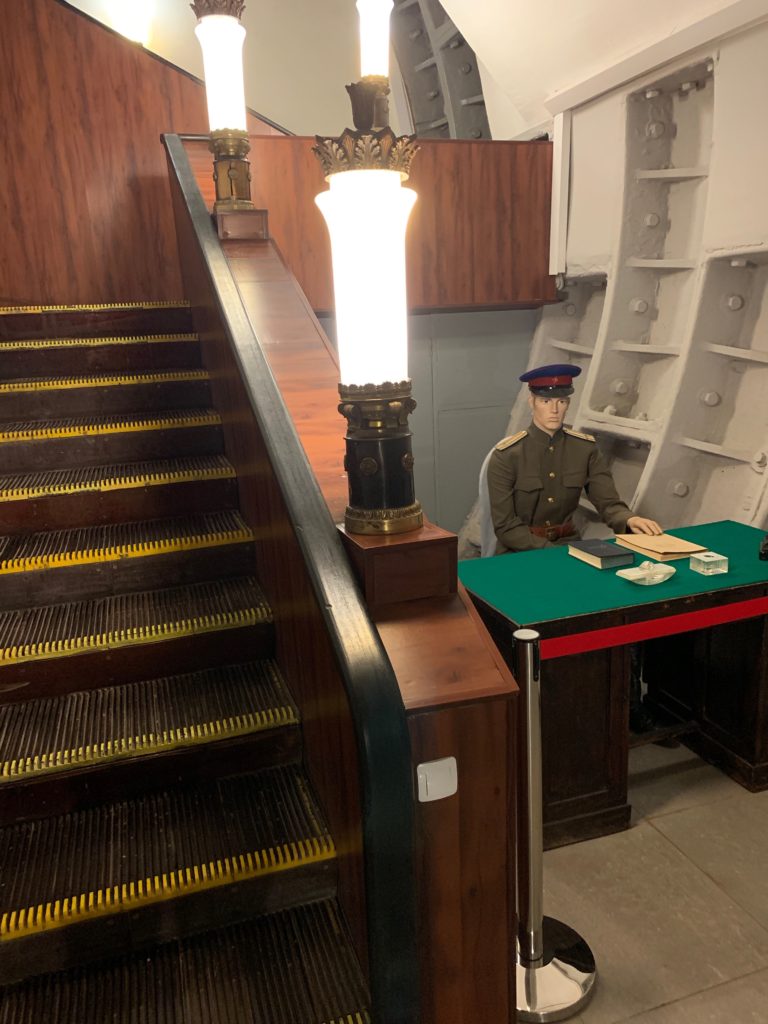
Oh, hey Joseph! Ironically, Stalin never even ended up visiting the bunker, as its construction wasn’t complete until after he died. Oh well!
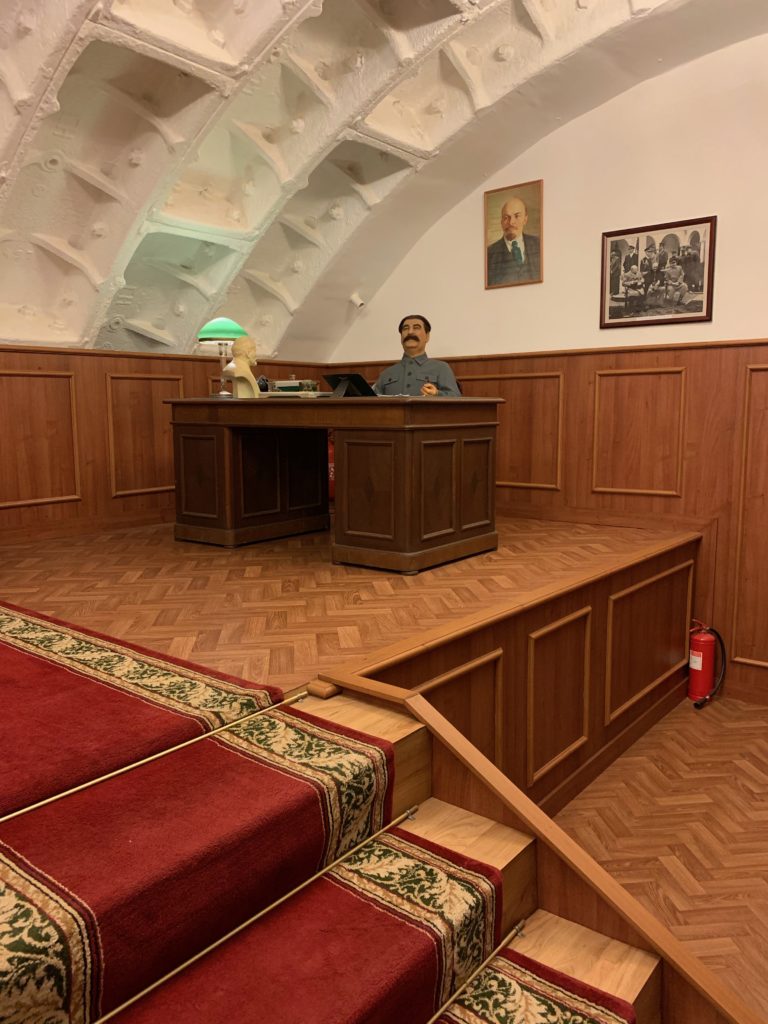
Meeting room for officials in case of nuclear attack. The room was only used one time, however, during the Cuban Missile Crisis.

A mock-up of the Soviet Union’s first atomic bomb…although our guide assured us it was real…
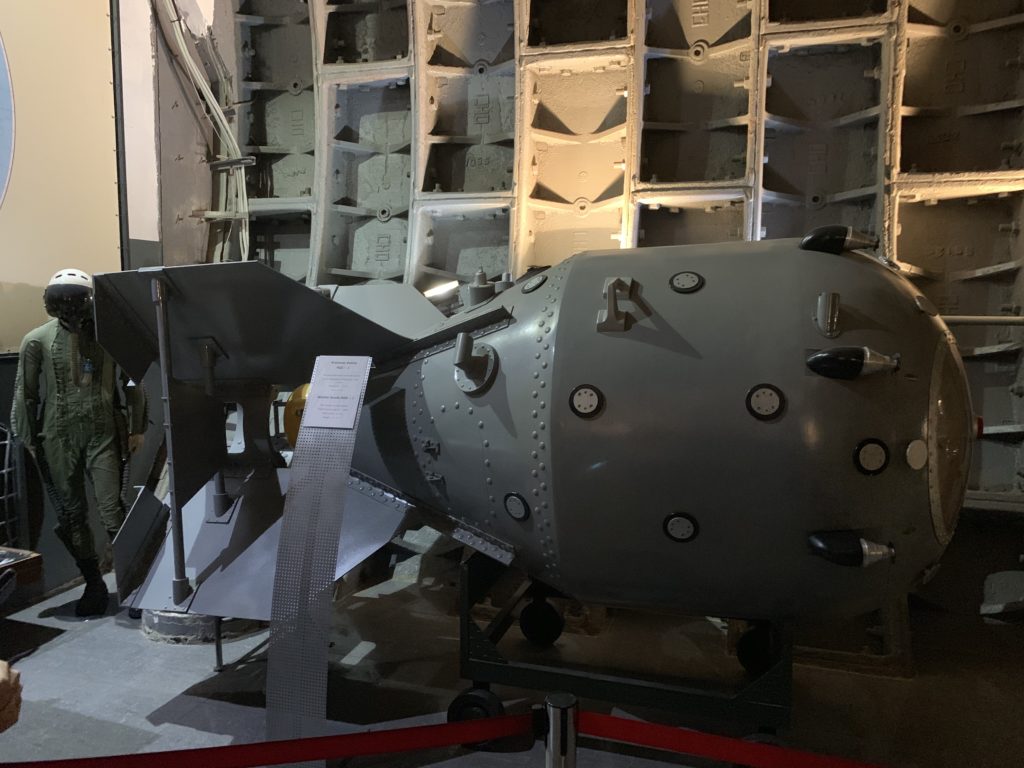
Missile command center…we even got to press the button and then watch a simulation film of missiles screaming towards the US…it was the ONLY time on the tour we weren’t allowed to take pictures…supposedly the consoles were the original ones, although the electronics were not.
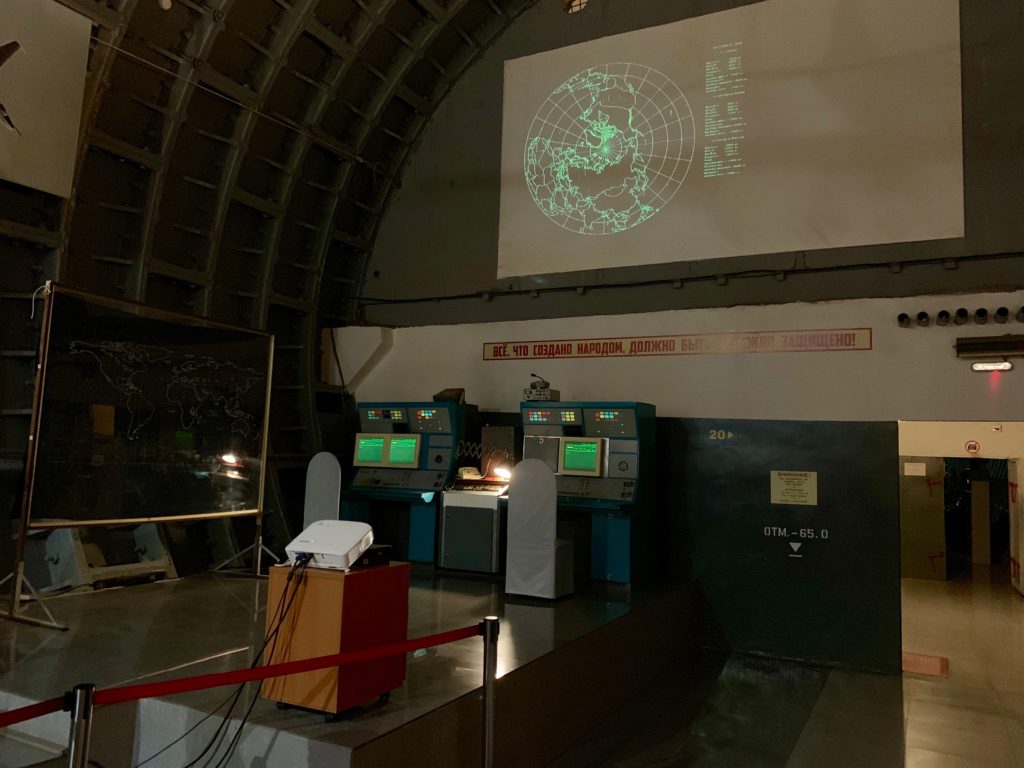
After the launch room, we were told to go down the next corridor while the guide closed the doors behind us. Of course, he locked the door, turned out all the lights, and the red lighting came on while air raid sirens blasted. It was a pretty cool thing to see!
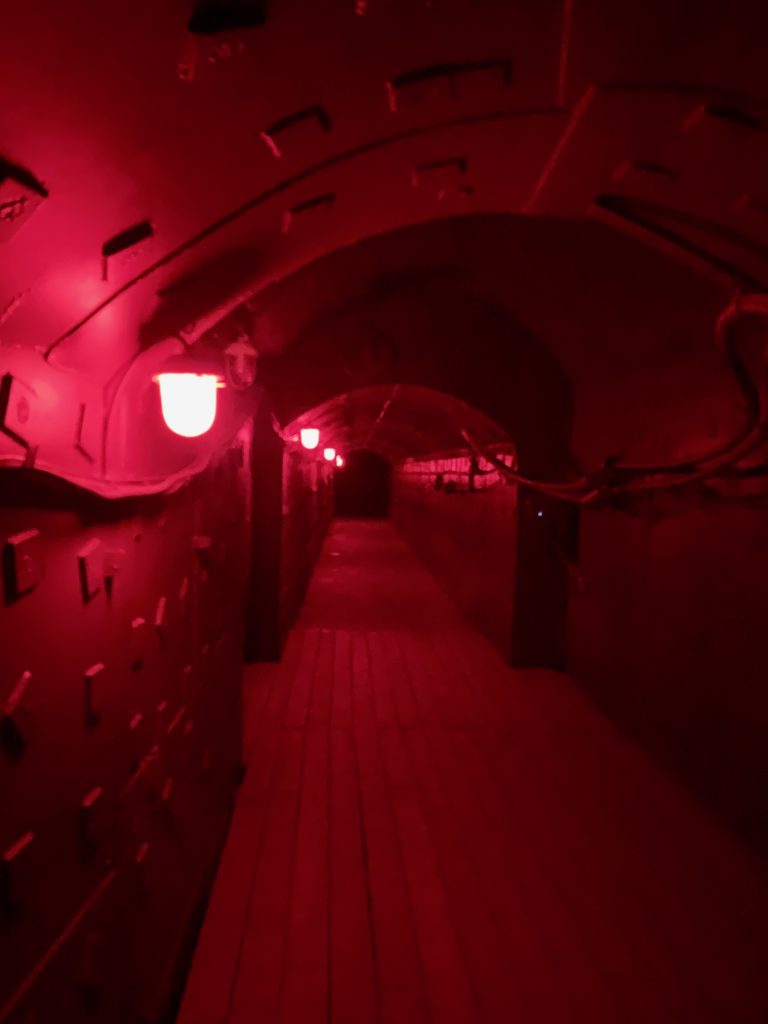
Standing outside the Bunker.
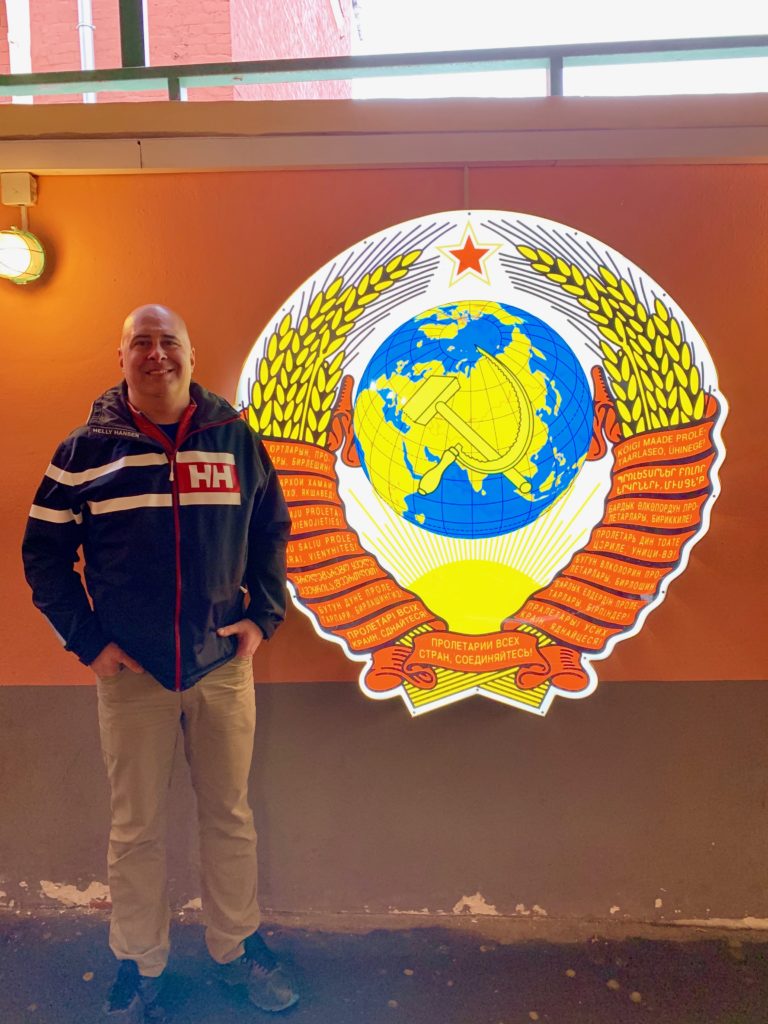
We ran into the metro right at rush hour, where it was packed…yet orderly in that way that people looking out for everyone else is. In DC, the metro is a disorderly mess with people stopping at the bottom of escalators, cutting each other off, and generally having no communal motivation at all. There’s a reason why it’s at capacity at a much lower point than Moscow, Tokyo, etc…
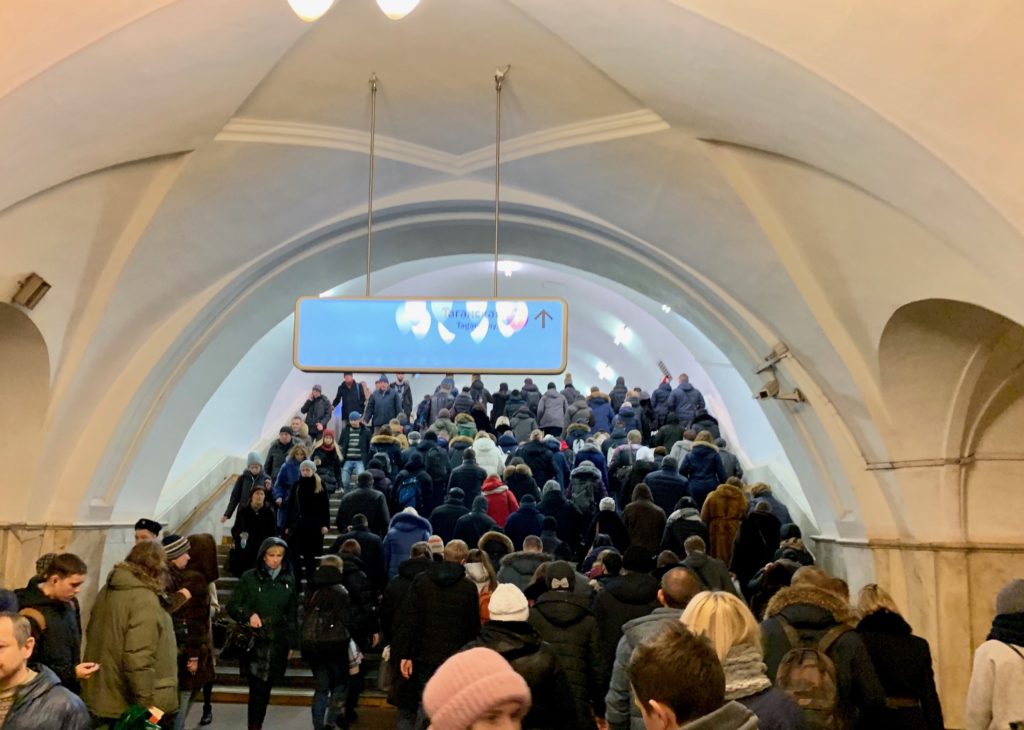
Next up our last few days in Moscow!
